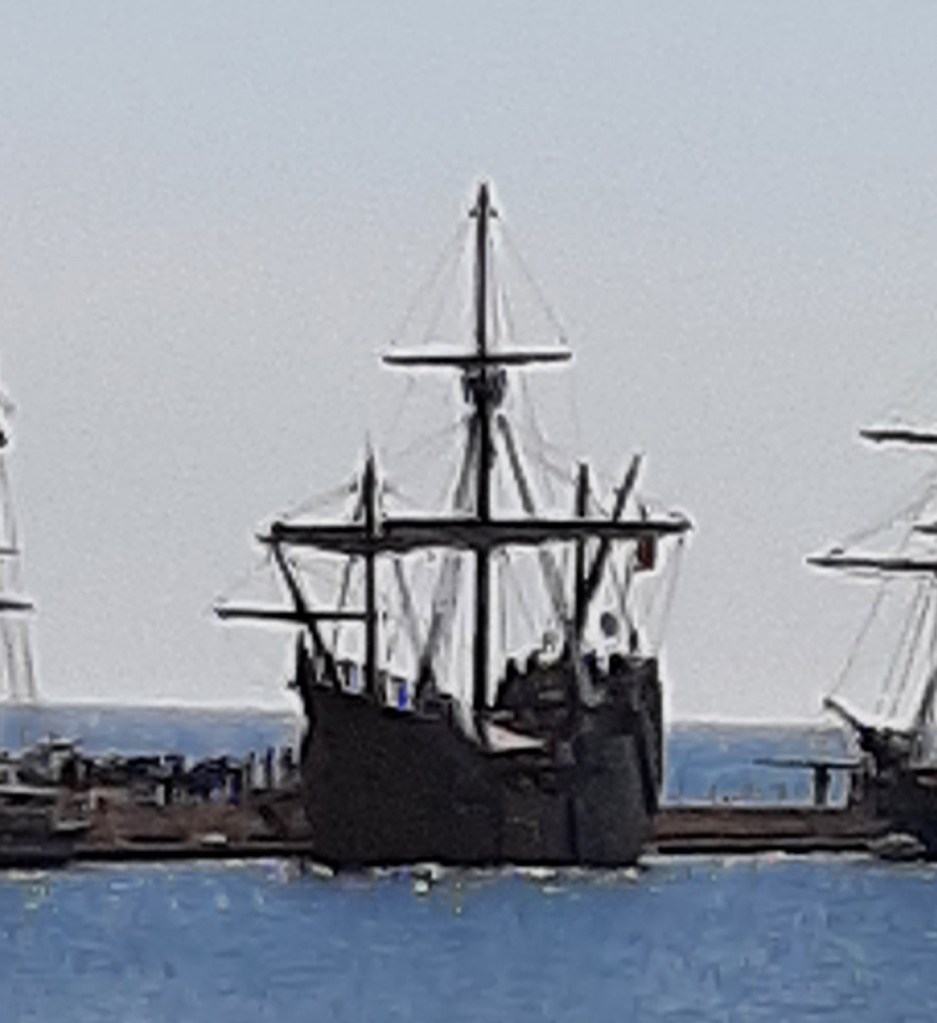500 years ago in 1522, the last (and only remaining) ship of Magellen’s famous circumnavigation of the earth limped into port in Sanlúcar, Spain. Magellan, a Portuguese captain, had begun the journey, which was financed by Spain, three years earlier with five ships and about 270 men.

Ferdinand Magellan is the most famous participant in this remarkable voyage. After all, he planned the entire trip, led the five ships across the Atlantic Ocean, kept the fleet intact through two attempted mutinies, discovered the strait of Magellan at the southernmost tip of South America, and carried on across the Pacific.
However, neither Magellan nor his flagship, the Nao Trinidad, completed the entire journey. Magellan’s first bad turn of luck was when one of his ships wrecked on the east coast of South America. Things got even worse when one of the would-be mutineers, Juan de Cartagena, deserted with another ship. That left only three ships in the fleet to cross the Pacific Ocean, arriving near Guam in March of 1521. Further troubles met the expedition as they fought with the natives of Guan and the Philippines. Magellan was killed in the battle of Mactan. (Lapu Lapu, the leader of the Philippine forces is considered a national hero in the Philippines for his resistance to Spanish colonization efforts.)
In spite of Magellan’s death, the expedition continued, though since only about 115 of the original 227 remained alive, one more ship was abandoned and burned. That left two ships, the Victoria and the Trinidad. It was decided that the Trinidad, which was in poor shape, would return home the way they had come, turning back east to cross the Pacific, while the Victoria would continue west through the Indian Ocean and around the Cape of Good Hope.
Both ships ran into trouble on their routes. The Trinidad was captured by the Portuguese and its crew held for ransom. (The Portuguese were angry at Spain’s encroachment on what they considered their spice trade.) While in Portuguese hands, the ship was wrecked in a storm.

Nao is the Portuguese word for the type of ship–called a carrack in English.
The Victoria, captained by Juan Sebastián Elcano, carried some 26 tons of cloves and cinnamon, but not enough food for the journey. Twenty of the crew died of starvation. The ship also ran into trouble from the Portuguese, but managed to escape with their cargo and return to Spain. Only 18 of the original 270 men survived the whole journey.
As I said earlier, Magellan is widely regarded as the leader of the first successful circumnavigation of the globe. However, why he gets this honor is a bit of a mystery to me.
After all, he didn’t make it home. Also, he was not a popular person back in Spain, nor was he held in high esteem in his native Portugal. Juan de Cartegena, the mutineer-deserter, had returned safely to Spain, where he sset about assiduously besmirching Magellan’s name (partly in an effort to keep himself and his mutineering crew out of jail).. Among other things, he accused Magellan of disloyalty to Spain. Since the Spanish Crown already had their doubts about Magellan’s motives since he was Portuguese, Cartagena’s tales were easily believed. In fact, Magellan’s wife and son were put under house arrest.
As far as the Portuguese were concerned, Magellan was nothing more than a traitor because he sailed under Spanish auspices. (To be fair, Portugal had denied him funding, whereas Spain agreed to finance the voyage.)
In any case, with both sides against him, and his death in the Philippines, it is rather surprising that he’s the one we remember.
Elcano seems the more likely candidate for the role of hero. After all, he, along with only eighteen of the original crew, finished the journey, bringing with them a valuable cargo of spices. But Elcano was Basque, not Spanish, and the Spanish Crown feared Basque nationalist sentiment. (Yes, tensions between the Basque and the rest of Spain are at least 500 years old!). In any case, his accomplishment was not highly celebrated at the time, and he has been largely ignored since then. (However that seems to be changing a bit now as history gets ‘updated’ and more inclusive.)
In the end, the real hero of the whole expedition is Antonio Pigafetta. He started with Magellan and finished with Elcano, and kept a journal throughout the voyage. His account is the most complete story of what happened. He may be fairly unknown, but his words have outlived kings, and sailors, and explorers. That’s power.

